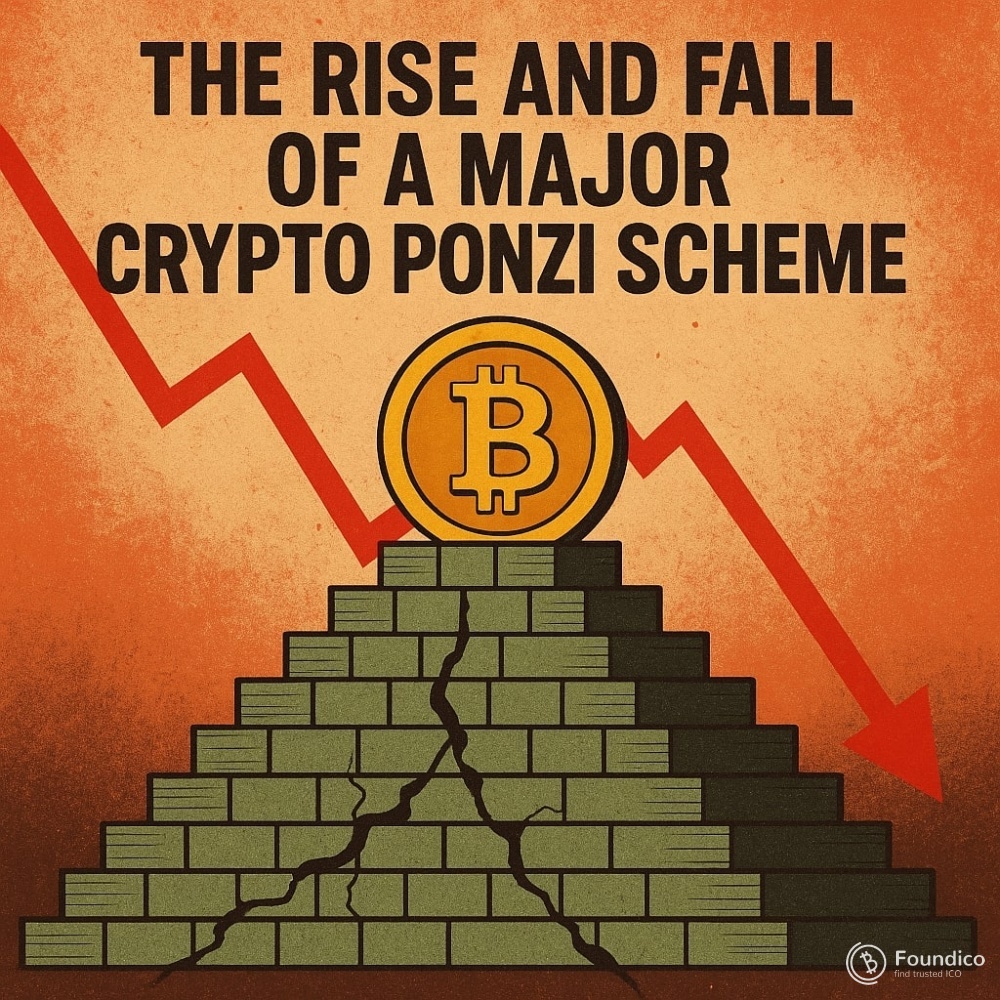The Rise and Fall of a Major Crypto Ponzi Scheme

By Dr. Pooyan Ghamari, Swiss Economist and Visionary
Cryptocurrency, heralded as the future of decentralized finance, has revolutionized the way we think about money and investment. It promises freedom from centralized control, transparency through blockchain technology, and unprecedented opportunities for wealth creation. However, alongside legitimate innovations, the crypto space has also attracted its share of fraud and manipulation — among the most infamous being Ponzi schemes that exploit investor trust and the complex, often opaque nature of crypto markets.
Today, we explore the anatomy of a major crypto Ponzi scheme — its meteoric rise fueled by hype and greed, and its inevitable collapse under the weight of deception. This analysis draws upon my years as an economist deeply engaged with global financial systems and my vision for safeguarding digital asset markets.
Understanding Ponzi Schemes in the Crypto Era
Ponzi schemes, named after Charles Ponzi who perpetrated one of the earliest known versions in the early 20th century, are fraudulent investment operations that pay returns to earlier investors using the capital of newer investors, rather than from profit earned by legitimate business activity.
Cryptocurrencies, with their allure of high returns and the promise of cutting-edge technology, have provided fertile ground for such schemes. The anonymous, decentralized nature of crypto transactions can obscure transparency, making it difficult for everyday investors to detect fraud until it is too late.
The Meteoric Rise: How the Scheme Gained Momentum
The major crypto Ponzi scheme I refer to — a cautionary tale repeated in various forms globally — began as an ambitious project with a compelling whitepaper, innovative-sounding technology, and charismatic leadership. Early investors saw quick returns, creating a powerful snowball effect as word-of-mouth spread.
Several factors contributed to the scheme’s rapid growth:
-
Exploiting FOMO (Fear of Missing Out): As crypto markets surged, the scheme capitalized on investor psychology, promising extraordinary profits in a short time.
-
Aggressive Marketing and Social Media: The promoters leveraged influencer endorsements, slick websites, and social media campaigns to lure new investors.
-
Complex Technical Jargon: By cloaking the operation in confusing technical terms, many investors deferred critical scrutiny, assuming legitimacy.
-
Lack of Regulatory Oversight: At the time, regulatory frameworks were still catching up to crypto innovations, leaving gaps for unscrupulous actors.
The Unsustainable Illusion: Signs of Collapse
While early returns appeared genuine, underlying the operation was a fragile financial pyramid. There was no real product, no sustainable revenue stream — just new investor funds circulating to pay earlier investors.
Classic warning signs emerged:
-
Delayed Withdrawals: Investors began to experience delays or limits when trying to cash out their funds.
-
Lack of Transparency: Audits and financial reports were vague or non-existent.
-
Founder Behavior: Leadership became evasive or suddenly disappeared from public view.
-
Regulatory Warnings: Authorities started issuing alerts and investigating the platform.
The Fall: Consequences and Aftermath
Eventually, the scheme collapsed, often triggered by a sudden rush of withdrawal requests or external regulatory intervention. The fallout was devastating:
-
Massive Financial Losses: Tens of thousands of investors lost millions, sometimes their life savings.
-
Legal Battles: Jurisdictions struggled to prosecute perpetrators, complicated by cross-border digital operations.
-
Erosion of Trust: Such scams damaged the broader cryptocurrency ecosystem, fostering skepticism among potential investors and regulators alike.
Lessons Learned and the Path Forward
As a Swiss economist and visionary, I emphasize the critical need for both vigilance and innovation to protect investors and promote sustainable growth in the crypto sector:
-
Investor Education: Understanding how to critically evaluate investment opportunities remains the first line of defense. Beware of promises that seem too good to be true.
-
Regulatory Evolution: Governments must collaborate internationally to create clear, enforceable frameworks that deter fraudulent activities while encouraging innovation.
-
Transparency and Auditing: Projects should adopt open-source protocols and independent audits to build genuine trust.
-
Technological Solutions: Emerging tools, such as AI-driven fraud detection and blockchain analytics, can help spot irregularities early.
The rise and fall of major crypto Ponzi schemes underscore the double-edged sword of cryptocurrency’s promise. While the technology holds transformative potential, it also exposes investors to unprecedented risks if left unchecked.
My vision for the future is clear: through education, regulation, and technological innovation, we can build a resilient crypto ecosystem that rewards genuine innovation and protects all participants from the pitfalls of deception. The lessons learned from past failures are invaluable in shaping a safer financial frontier for generations to come.
Dr. Pooyan Ghamari is a Swiss economist specializing in financial systems, digital currencies, and global economic trends. Known for his visionary insights, he advocates for balanced innovation coupled with rigorous safeguards in emerging markets.

 BitcoinHyper - Bitcoin Hyper finally unlocks fast and cheap Bitcoin transactions by delivering the first ever Bitcoin Layer 2 blockchain.
BitcoinHyper - Bitcoin Hyper finally unlocks fast and cheap Bitcoin transactions by delivering the first ever Bitcoin Layer 2 blockchain.